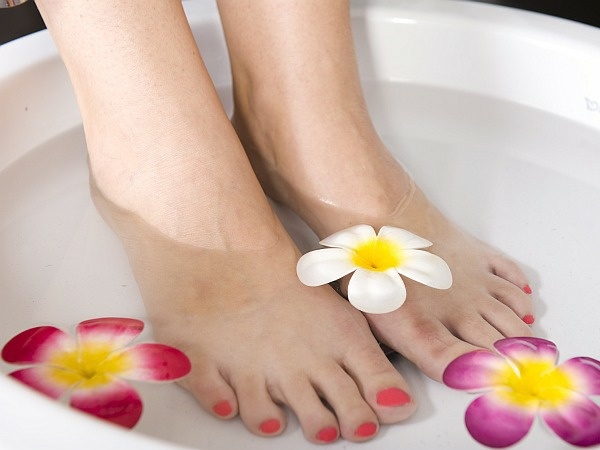Our feet are often the most ignored part of the body, especially in the winter when the casual flip-flops or the stylish sandals become redundant, and are replaced by socks and shoes to protect the toes from the cold dry air. However, the dry winter wind dehydrates the soles, leading to cracked heels, thereby increasing the need for foot care. Hence, to get lovely feet throughout the year, donât miss your pedicures during the winter.
Would a winter pedicure ward off dry skin worries?
A winter pedicure could protect your skin from several dry skin related foot problems.
1. It improves the appearance of your feet, making them soft and beautiful.
2. It prevents cracked heels, which if ignored for a long time might bleed, causing pain and discomfort.
3. It would save you from the embarrassment of revealing your feet.
4. If you miss the winter pedicure, your winter footwear will press against the cracked heels, triggering pain in the foot.
Itâs time to skip the pedicure, but when?
A pedicure is not harmful for a healthy person. However, if you are a diabetes patient, avoid the pedicure process if you are suffering from foot ulcer, sore, infections or neuropathy that reduces the sensation in the feet. Regardless of your blood sugar profile, an open wound on the foot serves as an entry point for bacteria that might be present in the bath water or on the instruments of the pedicurist. In diabetics, the numbness in the feet owing to nerve damage might complicate the wound, leading to severe infection.
Before booking an appointment with a pedicurist, it is a good idea to assess the sanitization process followed by the salon. Poor sanitation standards are often the key cause of fungal infections of the foot. The place should not only be clean and tidy but they should have clean footbaths that are cleaned after every use with hospital grade disinfectant. The pipes that supply water to the footbath are often a source of bacteria. The risk of contracting bacterial or fungal infections after a footbath is lower in spas that use pipeless pedicure chairs. Nonetheless, irrespective of the type of basin, it is imperative to wash every basin, bucket and bowl thoroughly after each treatment.
Just like footbaths, even the pedicuristâs instruments should be sterilized with EPA-registered disinfectants after each use. Moreover, check that the disinfectant fluid used for cleaning the tools are discarded after every use. In salons that use autoclave for disinfecting the pedicure instruments, make sure that the packages containing the sterilized tools are opened only after you occupy a chair for the treatment. It is advisable to book an appointment with a salon that uses easy to clean stainless steel instruments. While visiting a salon that uses emery boards and porous nail files, check whether new tools are used for each treatment.
If you are dissatisfied with the quality of the sanitization process of a salon, skip the pedicure until you find a better place to pamper your feet.
DIY winter pedicure ideas
A DIY winter pedicure is more affordable than an expensive spa treatment. Although it might not offer the relaxing experience of a pedicure in a salon, nonetheless, it can guarantee the best care for your feet.
Exfoliation is the first step in a pedicure treatment. To soften the dry skin, soak your feet in a large basin filled with warm water. Before soaking your feet in water, remove the old polish from the nails. Add some bath salts or specially formulated pedicure tablets to the bath water. For a more relaxing experience, you can consider adding few drops of rosewater or lavender essential oil to the footbath water. To remove the flaky skins, apply an exfoliating product to remove the dead skin. You can gently remove the dead skin with a brush or pumice stone.
After softening and smoothing the cuticles with the footbath, use a pedicure kit for clipping and filing the nails and cleaning the cuticle beds. With an emery board, file the nails slightly around the corners in one direction. Apply cuticle remover to the base of each nail and leave it for a minute. Gently push the skin where it meets the nail with an orange stick.
Next, moisturize your feet with a foot cream that easily penetrates into the skin, leaving it soft and hydrated for a long time.
Lastly, paint your nails with colors of your choice. You can also try embellishing the toenails with nail art.
A pedicuristâs note
1. Just because your feet is hidden inside a boot, does not mean that a pedicure is not essential in winter.
2. With the central heating system exaggerating the dryness of the indoor air, problems of foot calluses increases during the winter. Foot care is essential for protecting the feet from calluses.
3. It is not necessary to get your toes painted every time you go for a pedicure treatment.
4. Pedicure is safe for pregnant women. It helps her to relax her swollen and sore feet. Nonetheless, you can consult your doctor before seeking a pedicure treatment.
5. Ingrown nails could be avoided by cutting the nails straight.



